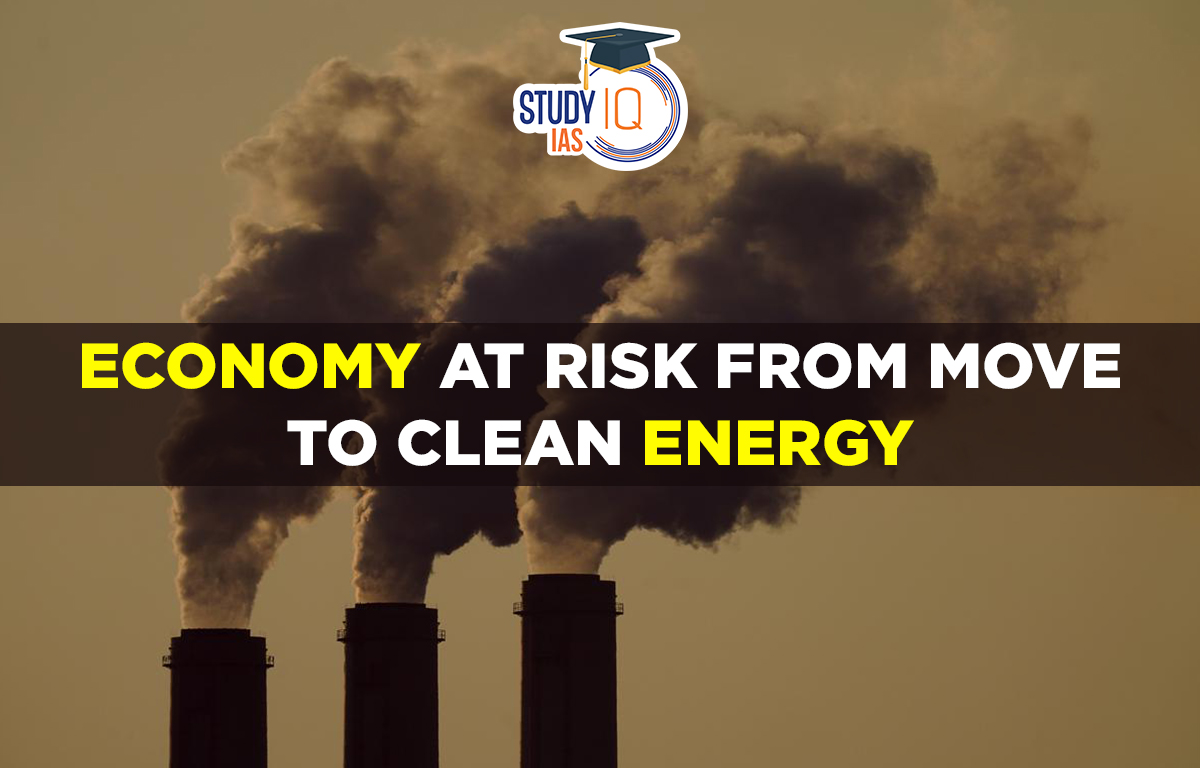Table of Contents
In News: India’s financial sector is highly exposed to the risks of the economy transitioning from being largely dependent on fossil fuel to clean energy, says a study in the Global Environmental Change journal.
Clean Energy
- Clean energy refers to the energy that comes from generation systems that do not produce any kind of pollution, especially greenhouse gases like CO2, which cause climate change.
- Examples of clean energy include solar energy, wind energy, geothermal energy, hydropower, ocean energy etc.
About the Findings of the Study
- Statistics
- Lending for the mining sector: An analysis of individual loans and bonds found that 60% of lending to the mining sector was for oil and gas extraction, while one-fifth of manufacturing sector debt is for petroleum refining and related industries.
- Lending for electricity: Electricity production accounted for 5.2% of outstanding credit, but only 17.5% of this lending is to pure-play renewables.
- Issues Highlighted
- Financial decisions: The financial decisions of Indian banks and institutional investors are locking the country into a more polluting, more expensive energy supply.
- Lack of expertise: There was a shortage of experts in India’s financial institutions, who had the expertise to appropriately advise the institutions on the transition.
- Dependence on carbon sources: India produces higher electricity from carbon-sources than the world average, despite its vast potential for cheap solar, wind and small hydropower.
- Recommendations
- Focus on renewables: Shifting resources towards renewables would deliver huge benefits: cheaper electricity, cleaner air and fewer emissions,
- Planned shift: There is a need for financiers, regulators and policymakers in emerging and developing economies to act swiftly in order to ensure an orderly transition to net-zero.

Measures by India to Transition to Clean Energy
- Net-zero goal: India has committed to reach net-zero emissions by 2070, and has also announced plans to source half of its electricity needs from non-fossil fuel sources by 2030.
- FDI in clean energy sector: Permitting Foreign Direct Investment (FDI) in clean energy ventures up to 100 percent under the automatic route.
- Adoption of electric vehicles: Adoption of the Faster Adoption and Manufacturing of Electric Vehicles (FAME) II scheme to reduce Mobility emissions.
- Renewable energy parks: Setting up of Ultra Mega Renewable Energy Parks to provide land and transmission to RE developers on a plug and play basis.
- Infrastructure creation: Laying of new transmission lines and creating new substation capacity for evacuation of renewable power.
- Skill development: Conducting skill development programmes to create a pool of skilled manpower for implementation, operation and maintenance of RE projects.
- Sovereign Green bonds: The Ministry for Finance & Corporate Affairs, has approved the final Sovereign Green Bonds framework of India.
- Cleaner coal utilization: The Government of India has announced plans to implement a US$ 238 million National Mission on advanced ultra-supercritical technologies for cleaner coal utilisation.


 Project SeaCURE: Ocean’s New Role in F...
Project SeaCURE: Ocean’s New Role in F...
 Coal Miners Day 2025: Date, History, The...
Coal Miners Day 2025: Date, History, The...
 Daily Quiz 03 May 2025
Daily Quiz 03 May 2025





















